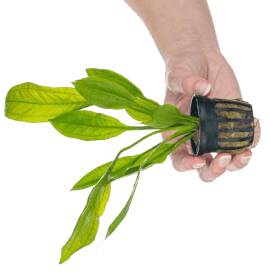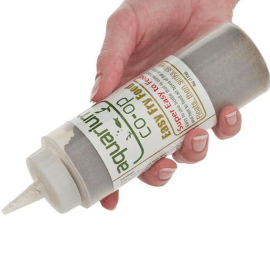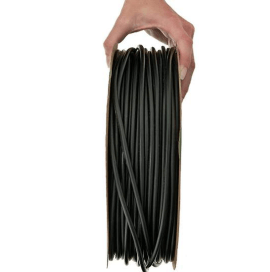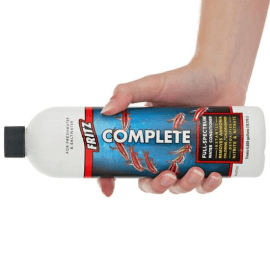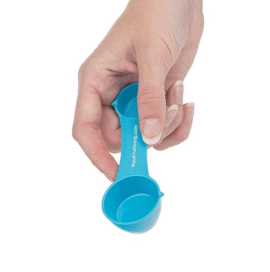How to Clean Aquarium Filters — Sponge, Hang-on-Back, Canister Filters and More
Do you wish you had crystal clear water in your aquarium? One of the keys to having an amazing-looking fish tank is to make sure you regularly maintenance the filter. Aquarium filters collect debris much like a vacuum, and eventually they must be emptied out or else they no longer work as efficiently. The frequency of filter cleanings depends on how quickly it gets clogged up, the size of the filter, the bioload or stocking level of the aquarium, how much food goes into the tank, and so forth. For example, a nano sponge filter may need to be cleaned once a month, while a larger canister filter may be able to last 3–6 months. Generally speaking, if you see tons of particles floating everywhere or the water flow isn’t as fast as before, it’s probably time to clean the filter.
How to Clean a Sponge Filter or Pre-Filter Sponge
If you have a sponge filter or pre-filter sponge (to cover the intake tube of your hang-on-back or canister filter), then hopefully it is made of coarse sponge material with a larger porosity so that it can hold more waste and go longer between cleanings. When the sponge is full, you can visually see that it is filled with brownish gunk. Most hobbyists just grab the sponge and bring it out of the tank for cleaning, which results in a cloud of brown waste being released into the water. This move is akin to emptying your vacuum while inside the house because there’s a big chance that dust will fly everywhere. Instead, we prefer to use the following method:
- Get a large fish bag or gallon-sized Ziploc plastic bag, fill it with water inside the tank, and gently place the sponge into the bag while it’s still underwater. Then, carefully lift the bag out of the tank to minimize the amount of dirty fish poop that escapes from the sponge.

Remove the sponge filter or pre-filter sponge in a bag.
- Move the bag over a bucket so that you will not spill water on the floor during the cleaning process.
- If you are cleaning a sponge filter, remove the strainer basket, base, and other components from the foam sponge before cleaning it.
- Squeeze the sponge several times inside the bag until the water inside is completely brown, and then pour out the dirty water into the bucket. (Malaysian trumpet snails like to hide in the sponge, so be careful that you don’t get stabbed by their pointy shells.)
- Put the sponge back inside the empty bag, and use the bag to scoop out more water from the aquarium. Squeeze the sponge a few times until the water gets brown and pour it out into the bucket.
- Repeat Step 4 about three to four times until the water in the bag is no longer brown in color.

Keep refilling the bag with tank water until the squeezed sponge no longer releases brown gunk.
- If you are cleaning a sponge filter, rinse the other filter components with water and use a toothbrush to scrub them if needed.
- Reinstall the sponge filter or pre-filter sponge, and pour the dirty bucket water onto your indoor or outdoor plants to reuse as fertilizer.
- Refill the aquarium if needed. The water will look cloudy right after the filter cleaning but should clear up within a few hours.
Can you clean a sponge filter in the sink? It depends. Our founder Cory has low amounts of chlorine in his tap water and therefore is not as concerned about chlorine killing the beneficial bacteria on the sponge. He also recommends using water that is roughly the same temperature as the tank water, since very hot water may damage the bacterial colony. If you have two sponge filters in the tank, you can take turns by cleaning one sponge filter this month and the other sponge filter next month so that it won’t disrupt the beneficial bacteria in the aquarium as much. The pros of using running tap water in a sink is that you can rinse out the sponge without repeatedly fetching bags of water. The cons are that this method tends to use more water and then you won’t be able to use the dirty fish water as free fertilizer.
How to Clean a Hang-on-Back or Canister Filter with Filter Media
This method applies to just about any type of aquarium filtration that uses filter media — such as a hang-on-the-back (HOB), canister, internal, corner box, or sump filter. You can visibly tell with some filters like HOB filters that the filter media is swollen with gunk and needs cleaning because the lid no longer sits flat on the filter. However, some filters like canister filters are easier to ignore since you can’t see the filter media. In those cases, pay attention see if the aquarium has slow flow or cloudy water.
- Unplug the filter, and clean the prefilter or intake sponge using the previous instructions.
- Follow the manufacturer’s instructions for removing the filter media. This step is easy for a hang-on-back filter but can be harder for a canister filter since you have to correctly disconnect the tubing without accidentally flooding your floors.
- Fill a bucket with aquarium water using a siphon or gravel vacuum.

Swish the bio-rings in tank water to wash off the dirt.
- Swish around the bio rings in the bucket of tank water to wash off the muddy slime.
- You can also squeeze the sponges in the bucket, but for coarser sponges, some hobbyists like to use a high-pressure hose outside to spray off the debris.

These sponges are primarily used for mechanical filtration and were sprayed off with a hose.
- For disposable filter media like fine filter floss or activated carbon, you may need to remove and replace them with new filter media.
- During this process, try to keep the filter media wet to prevent drying, which may decrease the beneficial bacteria count.
- If needed, rinse the filter housing itself using water only and no soap. Follow the manufacturer’s instructions to keep any sensitive electronic components dry.
- Reassemble the filter, refill the tank, and reinstall the pre-filter sponge if needed.
To learn about which filter is the best for your fish tank setup, learn about the pros and cons of the 5 most common filters in the aquarium hobby. Enjoy nature daily!
